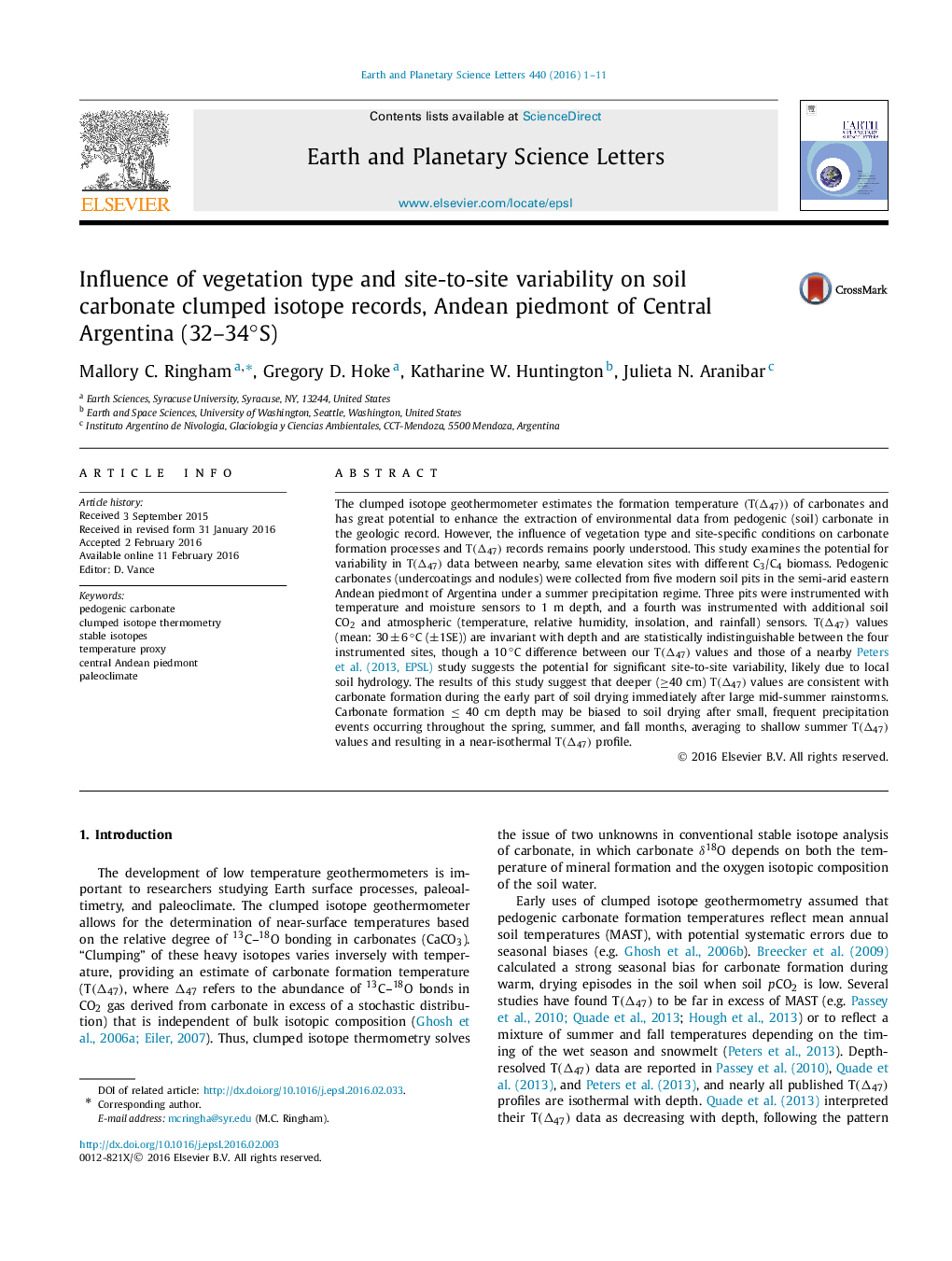| کد مقاله | کد نشریه | سال انتشار | مقاله انگلیسی | نسخه تمام متن |
|---|---|---|---|---|
| 6427578 | 1634716 | 2016 | 11 صفحه PDF | دانلود رایگان |

- Soil carbonate T(Î47) records may vary spatially due to local soil hydrology.
- Variations in C4/C3 biomass do not impact T(Î47) records.
- Soil carbonate T(Î47) records are consistently isothermal with depth.
- Shallow carbonates reflect average soil conditions after most rainfall events.
- Deep carbonate formation may occur only after large, discrete rainfall events.
The clumped isotope geothermometer estimates the formation temperature (T(Î47)) of carbonates and has great potential to enhance the extraction of environmental data from pedogenic (soil) carbonate in the geologic record. However, the influence of vegetation type and site-specific conditions on carbonate formation processes and T(Î47) records remains poorly understood. This study examines the potential for variability in T(Î47) data between nearby, same elevation sites with different C3/C4 biomass. Pedogenic carbonates (undercoatings and nodules) were collected from five modern soil pits in the semi-arid eastern Andean piedmont of Argentina under a summer precipitation regime. Three pits were instrumented with temperature and moisture sensors to 1 m depth, and a fourth was instrumented with additional soil CO2 and atmospheric (temperature, relative humidity, insolation, and rainfall) sensors. T(Î47) values (mean: 30±6°C (±1SE)) are invariant with depth and are statistically indistinguishable between the four instrumented sites, though a 10â°C difference between our T(Î47) values and those of a nearby Peters et al. (2013, EPSL) study suggests the potential for significant site-to-site variability, likely due to local soil hydrology. The results of this study suggest that deeper (â¥40 cm) T(Î47) values are consistent with carbonate formation during the early part of soil drying immediately after large mid-summer rainstorms. Carbonate formation ⤠40 cm depth may be biased to soil drying after small, frequent precipitation events occurring throughout the spring, summer, and fall months, averaging to shallow summer T(Î47) values and resulting in a near-isothermal T(Î47) profile.
Journal: Earth and Planetary Science Letters - Volume 440, 15 April 2016, Pages 1-11